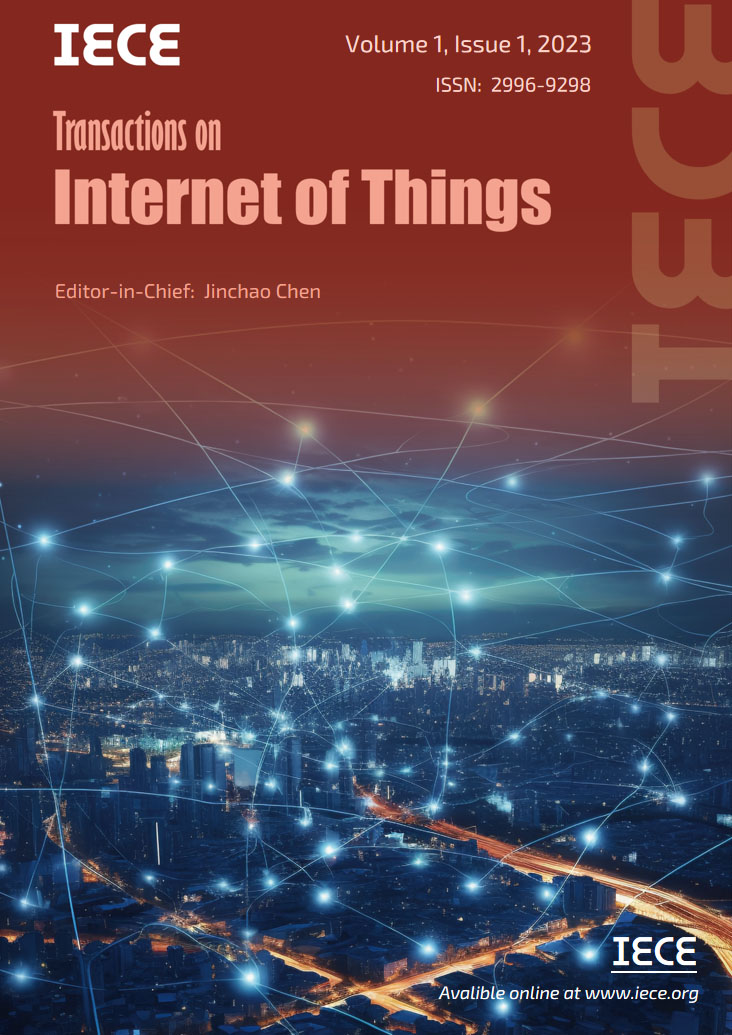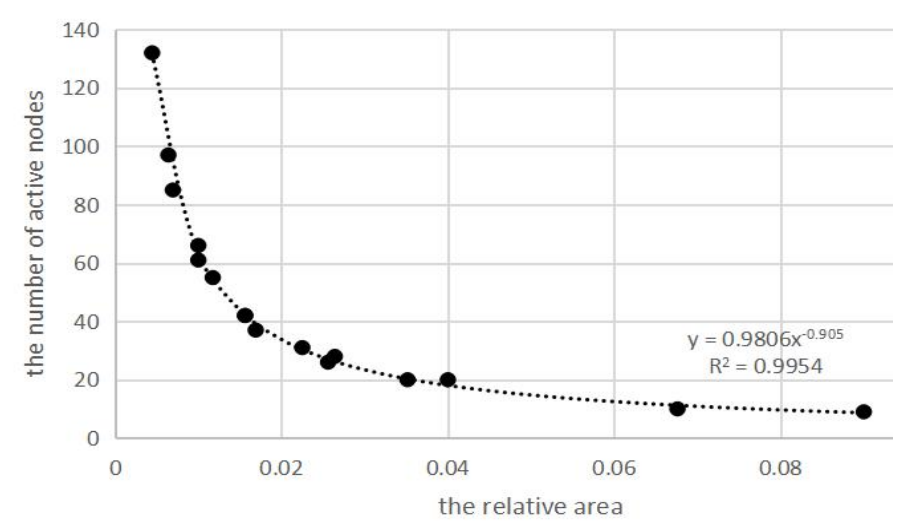IECE Transactions on Internet of Things
ISSN: 2996-9298 (Online)
Email: cjc@nwpu.edu.cn


 Submit Manuscript
Edit a Special Issue
Submit Manuscript
Edit a Special Issue

[1] Zhu, C., Zheng, C., Shu, L., & Han, G. (2012). A survey on coverage and connectivity issues in wireless sensor networks. Journal of Network and Computer Applications, 35(2), 619-632, doi: 10.1016/j.jnca.2011.11.016.
[2] Renold, A. P., & Chandrakala, S. (2016). Survey on state scheduling-based topology control in unattended wireless sensor networks. Computers & Electrical Engineering, 56, 334-349, doi: 10.1016/j.compeleceng.2015.12.024.
[3] Zhang, B., Tong, E., Hao, J., Niu, W., & Li, G. (2016). Energy efficient sleep schedule with service coverage guarantee in wireless sensor networks. Journal of Network and Systems Management, 24, 834-858, doi: 10.1007/s10922-015-9361-9.
[4] Singh, B., & Lobiyal, D. K. (2013). Traffic-aware density-based sleep scheduling and energy modeling for two dimensional Gaussian distributed wireless sensor network. Wireless personal communications, 70, 1373-1396, doi: 10.1007/s11277-012-0754-8.
[5] Li, J., Chen, Z., Cheng, L., & Liu, X. (2022). Energy data generation with wasserstein deep convolutional generative adversarial networks. Energy, 257, 124694, doi: 10.1016/j.energy.2022.124694.
[6] Wang, A., Liu, Y., Zhang, J., & Liu, Y. (2016). Coverage algorithm for finding the minimum working sets in WSNs. Journal of Xidian University, 43(04), 141-146.
[7] Liu, X., Zhang, X., Hu, T., & Zhu, Q. (2018). Deployment optimization of wireless sensor network based on parallelized cuckoo search algorithm. Application Research of Computers, 35(7), 2063-2065.
[8] Yu, W., Li, X., Yang, H., Huang, B. (2017). Extrapolation artificial bee colony algorithm research on deployment optimization in wireless sensor network. Instrument Technique and Sensor, 6,158-160.
[9] Zhou, L., Yang, K., Zhou, P. (2010). Optimal coverage configuration based on artificial fish swarm algorithm in WSNs. Application Research of Computers, 6, 2276-2279.
[10] Qin, N., Chen, J., Ding, Z. (2015). Balanced rate area coverage algorithm. Chinese Journal of Sensors and Actuators, 28(4),578-584.
[11] Liu, Q., Cheng, L., Jia, A. L., & Liu, C. (2021). Deep reinforcement learning for communication flow control in wireless mesh networks. IEEE Network, 35(2), 112-119, doi: 10.1109/MNET.011.2000303.
[12] Huang, Y., Cheng, L., Xue, L., Liu, C., Li, Y., Li, J., & Ward, T. (2021). Deep adversarial imitation reinforcement learning for QoS-aware cloud job scheduling. IEEE Systems Journal, 16(3), 4232-4242, doi: 10.1109/JSYST.2021.3122126.
[13] Cheng, L., Wang, Y., Liu, Q., Epema, D. H., Liu, C., Mao, Y., & Murphy, J. (2021). Network-aware locality scheduling for distributed data operators in data centers. IEEE Transactions on Parallel and Distributed Systems, 32(6), 1494-1510, doi: 10.1109/TPDS.2021.3053241.
[14] Cheng, F., Huang, Y., Tanpure, B., Sawalani, P., Cheng, L., & Liu, C. (2022). Cost-aware job scheduling for cloud instances using deep reinforcement learning. Cluster Computing, 1-13, doi: 10.1109/MNET.011.2000303.
[15] Li, J., Tong, X., Liu, J., & Cheng, L. (2023). An Efficient Federated Learning System for Network Intrusion Detection. IEEE Systems Journal, doi: 10.1109/JSYST.2023.3236995.
[16] Li, Y., Pan, B. (2018). Research of WSN regional coverage based on adaptive mutation binary particle swarm optimization. Journal of Sichuan University of Science & Engineering (Natural Science Edition), 31(01), 20-24.
[17] Wang, Y., Qiu, F. Y., & Guo, H. D. (2019). Adaptive inertia weight binary particle swarm optimization algorithm with mutation operator. Journal of Chinese Computer Systems, 40(04), 733-737.
[18] Wu, X., Zhang, C., Zhang, R., & Sun, Y. (2019). Clustering routing protocol based on improved PSO algorithm in WSN. Journal on Communications, 40(12), 114-123.
[19] Li, Y., & Pan, B. (2018). Research of WSN Regional Coverage Based on Adaptive Mutation Binary Particle Swarm Optimization. Journal of Sichuan University of Science & Engineering (Natural Science Edition), 31(01), 20-24.
IECE Transactions on Internet of Things
ISSN: 2996-9298 (Online)
Email: cjc@nwpu.edu.cn

Portico
All published articles are preserved here permanently:
https://www.portico.org/publishers/iece/